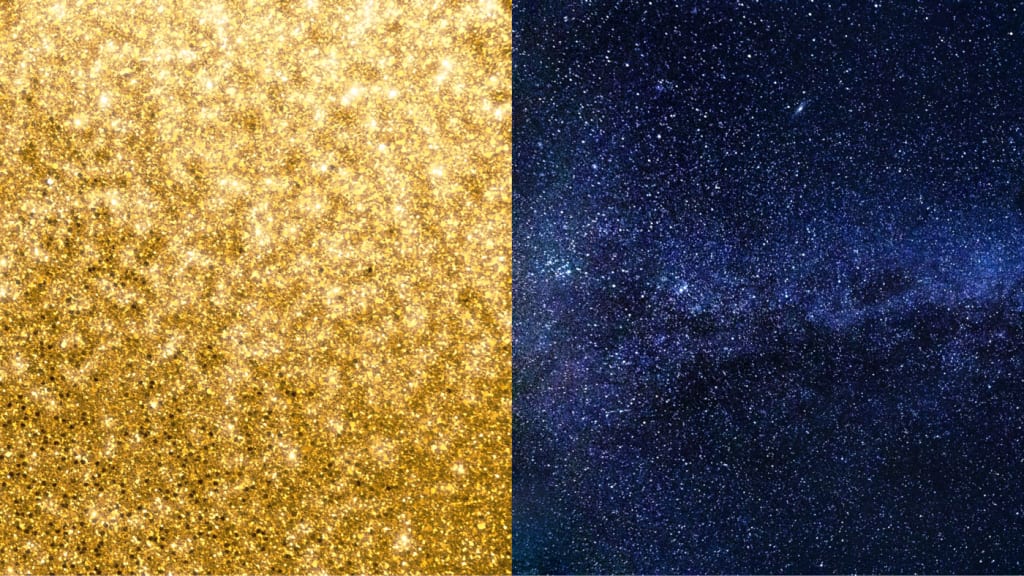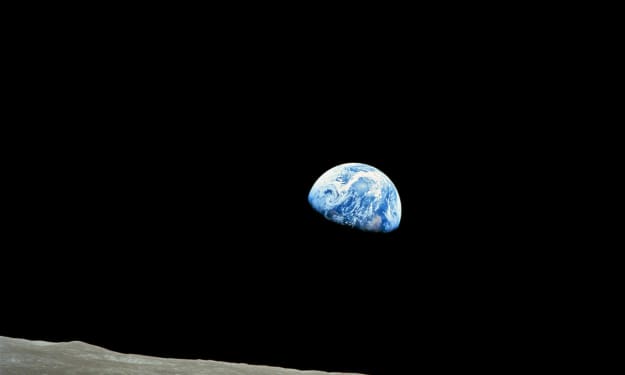Why is the night dark?
The enigma of the dark night sky.

When you're standing in the middle of a forest, you can see a wall of trees in every way. Some are closer, while others are further away, but they all span your whole field of view. A star should be visible at every place in the night sky in an endlessly big and indefinitely old cosmos. There should not be any shadows. The night sky should be brilliant and clear. Why isn't it the case?
Infinitely large and infinitely old
For most of its existence, humanity has inherently assumed that the universe is infinitely large. It has always been there, long before us, and it always will be there, long after we are gone. That is not so. Just recently, in relative historic terms, we discovered that the universe has a beginning — the Big Bang.
However, back then, before the scientific revolution, there was no compelling reason to believe otherwise. After all, God created the universe, and God has always existed. Giordano Bruno and Galileo Galilei, both deeply religious, continued to believe in an infinite universe with an infinite number of stars in the 16th and early 17th century. They were smart men.
Kepler asking questions
In the year 1610, Johannes Kepler posed an uncomfortable question: Why isn’t our night sky completely covered with stars? Every square centimeter should be as bright as the Sun’s surface. If there are an infinite number of stars, every upward gaze should inevitably end at one. Similar to the forest and the trees mentioned earlier. This, according to Kepler, was an argument for his thesis of a finite universe with a finite number of stars. The dilemma would keep astronomers occupied for a long time. In 1823, Heinrich Wilhelm Obers formulated what is now known as ‘Olbers’ paradox’. He stated it as follows:
“Were the succession of stars endless, then the background of the sky would present us a uniform luminosity, like that displayed by the Galaxy — since there could be absolutely no point, in all that background, at which would not exist a star. The only mode, therefore, in which, under such a state of affairs, we could comprehend the voids which our telescopes find in innumerable directions, would be by supposing the distance of the invisible background so immense that no ray from it has yet been able to reach us at all.”
Many well-known scientists continued to ponder this quandary, but none found a satisfactory solution. One theory proposed that there might be some kind of matter between the stars which absorbs the light. Something is blocking our view. But if that were the case, this matter would have continued to heat up until it began to glow itself. This would cause a bright night sky yet again. After all, it would have had an infinite amount of time to warm up.
Why the night is dark
The issue became clearer when we observed that distant stars were moving further and further away from us. The universe is expanding. If we turn back time, we come to the conclusion that at some point all the stars must have been in exactly the same place. The universe had a beginning. It wasn’t always there. We now knew that, while the universe may not be limited in space, it is limited in time. The Big Bang. And then it slowly became clear why it is dark at night and why we can sleep without wearing sunglasses.
“For the night is dark and full of terrors.”
Melisandre, Game of Thrones
The first reason is that the farthest galaxies and stars cannot be seen because the universe’s expansion causes their wavelengths to expand so much on their way to us that they are no longer visible to the naked eye. This is known as redshift. However, we can still see these stars through telescopes.
Even the best telescopes, however, appear to have a limit due to the second reason: time. As you are probably aware, a light-year describes a distance rather than a time interval. It is the exact distance that light travels in a year. For the sake of simplicity, ignore the universe’s expansion and consider the stars that are currently 14 billion light-years away from us. Accordingly, the light from these stars must have been traveling to us for exactly 14 billion years. The universe, however, is only 13.7 billion years old. So the light from these faraway stars hasn’t had enough time to reach us.
Our tiny bubble
Because the universe is expanding, light must actually travel an even longer distance. There are even stars whose light will never reach us because the universe’s expansion is too fast for them. Imagine you are swimming against a powerful current that never stops and gets faster and faster. That is how light feels. There may be an infinite number of stars, but we will only ever be able to see a small selection of them. Our tiny sliver of the cosmos, cut off from the rest of infinity for all time. Who knows what we’re missing.
About the Creator
Enjoyed the story? Support the Creator.
Subscribe for free to receive all their stories in your feed. You could also pledge your support or give them a one-off tip, letting them know you appreciate their work.






Comments
There are no comments for this story
Be the first to respond and start the conversation.